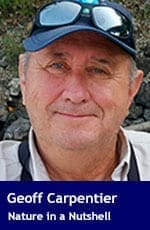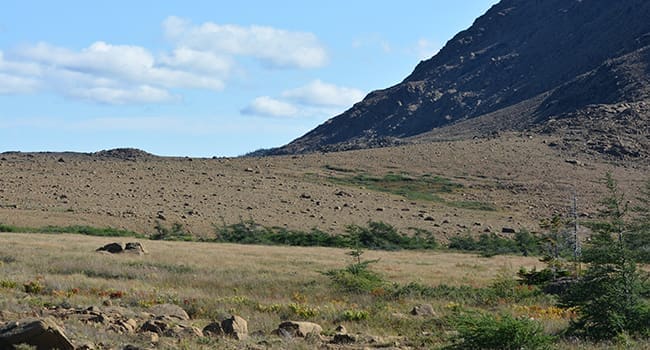
It’s here in Gros Morne National Park that geologic activity pushed the mantle to the surface so that millions of years later we could stand on this barren landscape
 I get to travel to some great places as an expedition guide. A few months ago (pre-COVID-19), I travelled to parts of Canada I had never seen before and filled in gaps on my lifelong adventures in Canada’s remotest reaches.
I get to travel to some great places as an expedition guide. A few months ago (pre-COVID-19), I travelled to parts of Canada I had never seen before and filled in gaps on my lifelong adventures in Canada’s remotest reaches.
I thought I’d share some insights about Canada’s northern regions as we celebrate Canada’s 150-plus years and the opening of the north, with the perceived perils of climate change and a pandemic afoot.
This journey started in the Gulf of St. Lawrence and involved all the Maritime provinces and Newfoundland and Labrador (Newfoundland is not a Maritime province, it’s an Atlantic province).
I had done this part of the route before and I wanted more as it whetted my appetite for what was to come.
From here and for the next 20 days, I would travel to territory new to me as we sailed ever northward in search of wildlife, culture and history.
Our journey began in Bonne Bay on Newfoundland’s west coast, where we would disembark in our trusty Zodiac pontoon boats and explore the town and the Tablelands.
The latter is one of only five or six places in the world where one can stand on the mantle of the Earth. It’s here in Gros Morne National Park that geologic activity (technically referred to as an obduction process of plate tectonics) pushed the mantle to the surface so that millions of years later we could stand on this barren landscape.
Surprisingly, despite the Mars-like features of the terrain, many plants and animals thrive. But they’re very different from the ones in the adjacent more fertile landscapes.

A gravestone in Hebron where the residents were once forced from their homes by the federal government and made to resettle across Canada’s north
Our journey continued northeastward to L’Anse aux Meadows, where our landing was thwarted by high winds and rough seas. It simply wasn’t safe to land our Zodiacs on the rocky shore, so we viewed this iconic northern point from the comfort of our parent ship, the Akademik Ioffe.
The name of the community originated from a Norse word vinland. It means ‘land of meadows,’ as described in the Icelandic sagas, which chronicled events in northern Europe from the ninth through 11th centuries.
L’Anse aux Meadows remains the only confirmed Norse site in North America, so it’s culturally and historically very significant. I was disappointed we couldn’t explore it on foot but at least I got close.
Heading further north, we landed at Battle Harbour, Labrador. It’s only inhabited in the summer by commercial fishermen and summer cottagers.
Settled in the 1770s, it was the economic and social centre for central Labrador, relying on cod as a staple of its economy. The community’s permanent residents were relocated under a government-sponsored resettlement program from 1965 to 1970.
Further north is Hopedale, a roadless community founded as an Inuit settlement named Agvituk or ‘place of the whales.’
As is common in many remote areas of North America, missionaries arrived to convert the residents to Christianity. In this instance, Moravian missionaries came in the 1780s and renamed the town Hopedale. The mission still stands and is believed to be the oldest frame building in Canada east of Quebec. It’s a magnificent building and exploring its tiny nooks, hidden corridors and crannies reveals insights into history and culture.
At our next stop, we were immersed in a tragic event in Canadian history, where the residents of Hebron were forced from their homes and resettled across the Canadian north by the federal government.
We had the good fortune to meet one of those who was forced to move as he has returned to town to help rehabilitate the mission building. His stories were spellbinding and revealing as he explained what it was like to give up your lifelong home and move to a strange community with different values and beliefs.
How does one who relies on hunting and fishing to survive simply move and learn where to find the animals in a place he has never visited?
The devastating memory lingers. Families were separated during this relocation, which took place in 1959, and the scars have clearly not healed.
Next time I’ll take you further north along Labrador’s coast on our way to Baffin Island.
Geoff Carpentier is a published author, expedition guide and environmental consultant. Visit Geoff online at www.avocetnatureservices.com, on LinkedIn and on Facebook.
The views, opinions and positions expressed by columnists and contributors are the author’s alone. They do not inherently or expressly reflect the views, opinions and/or positions of our publication.

